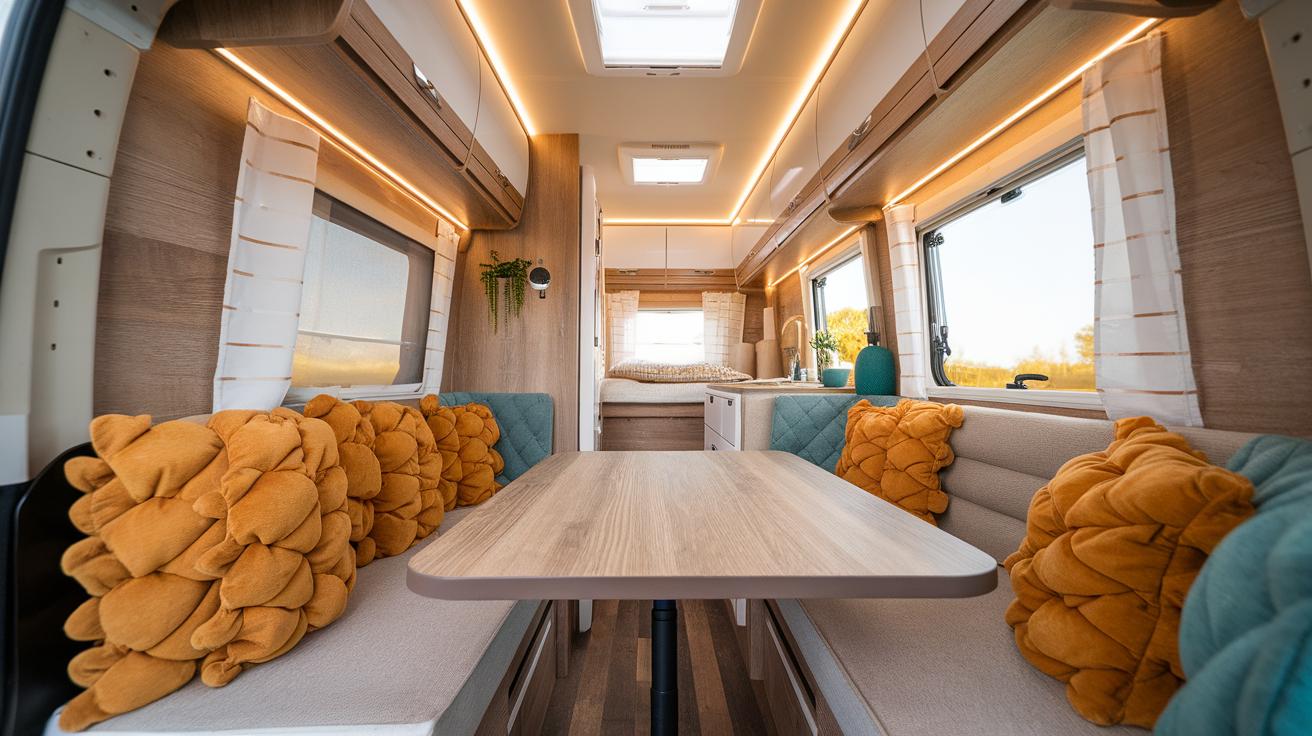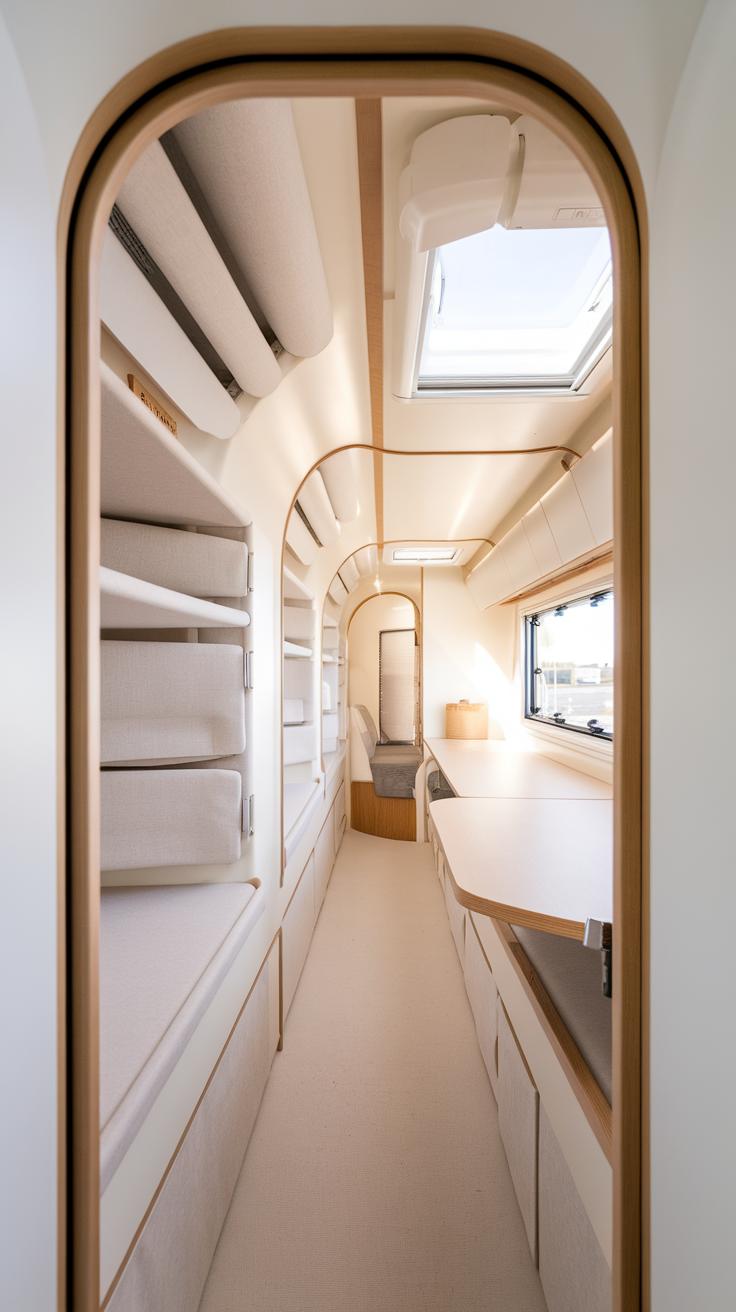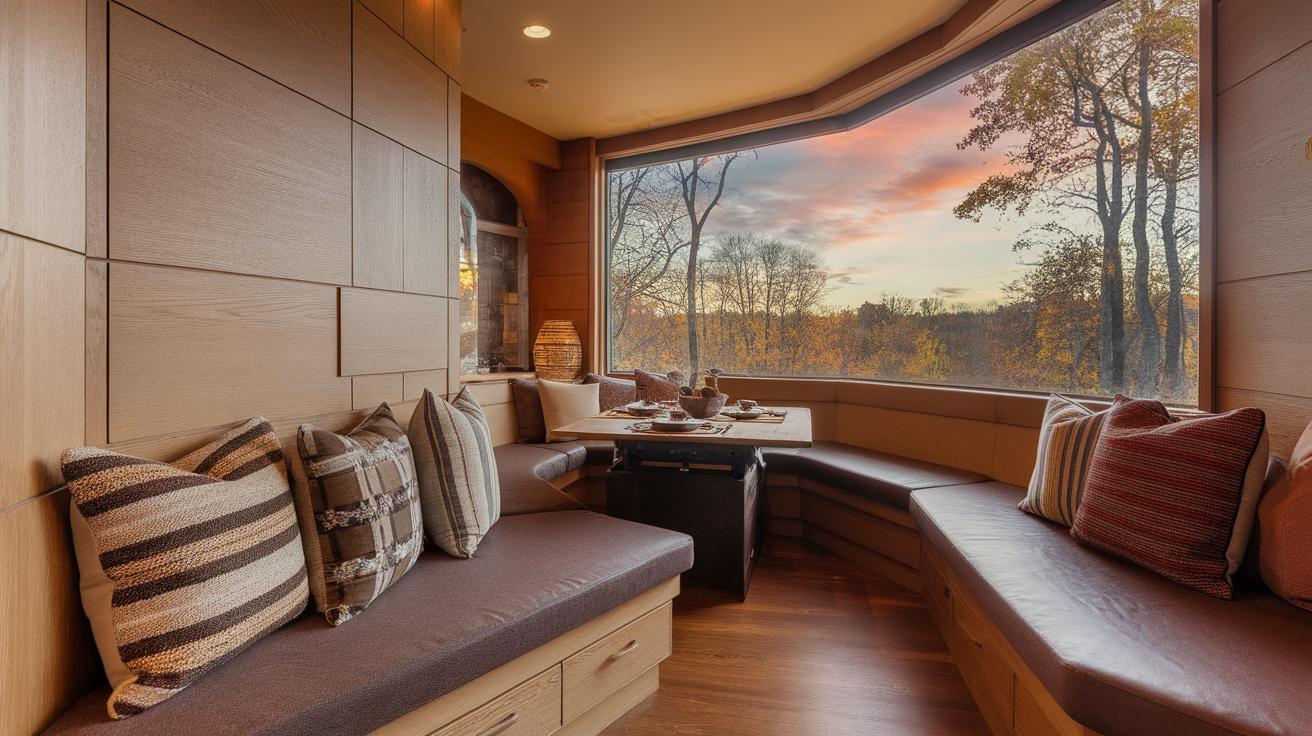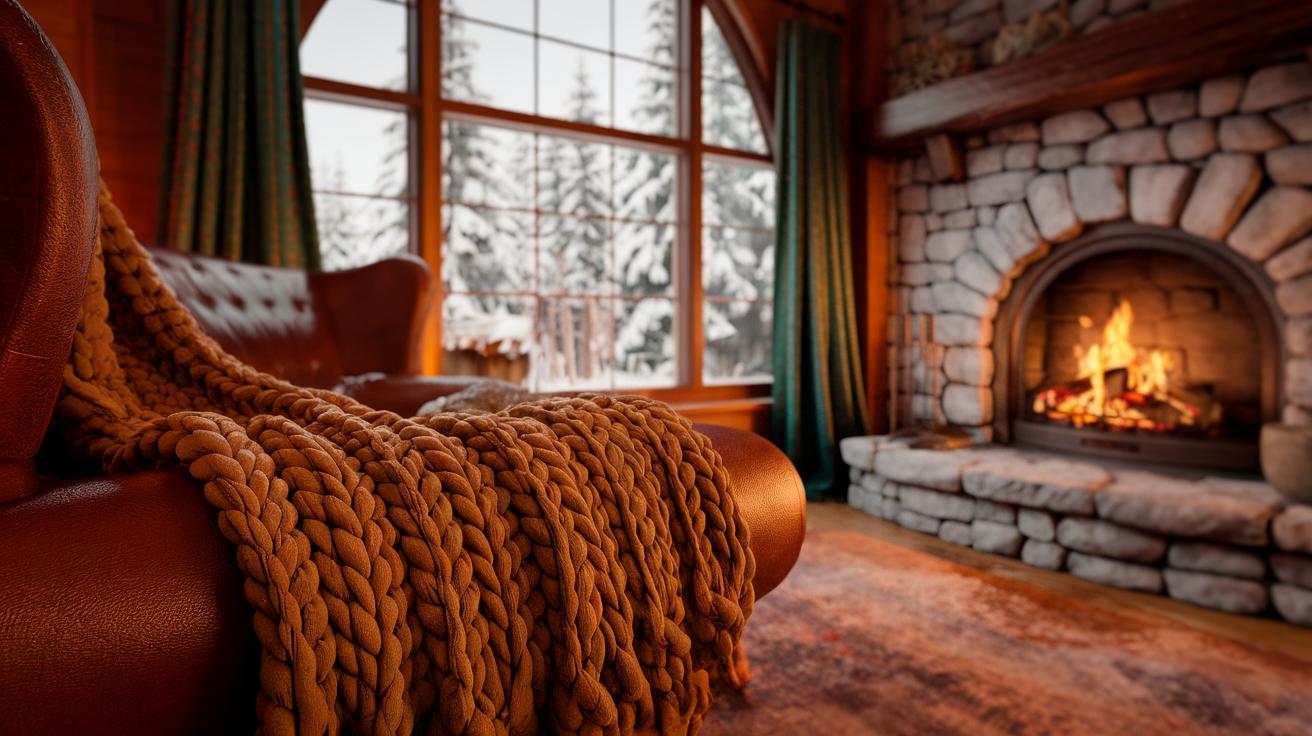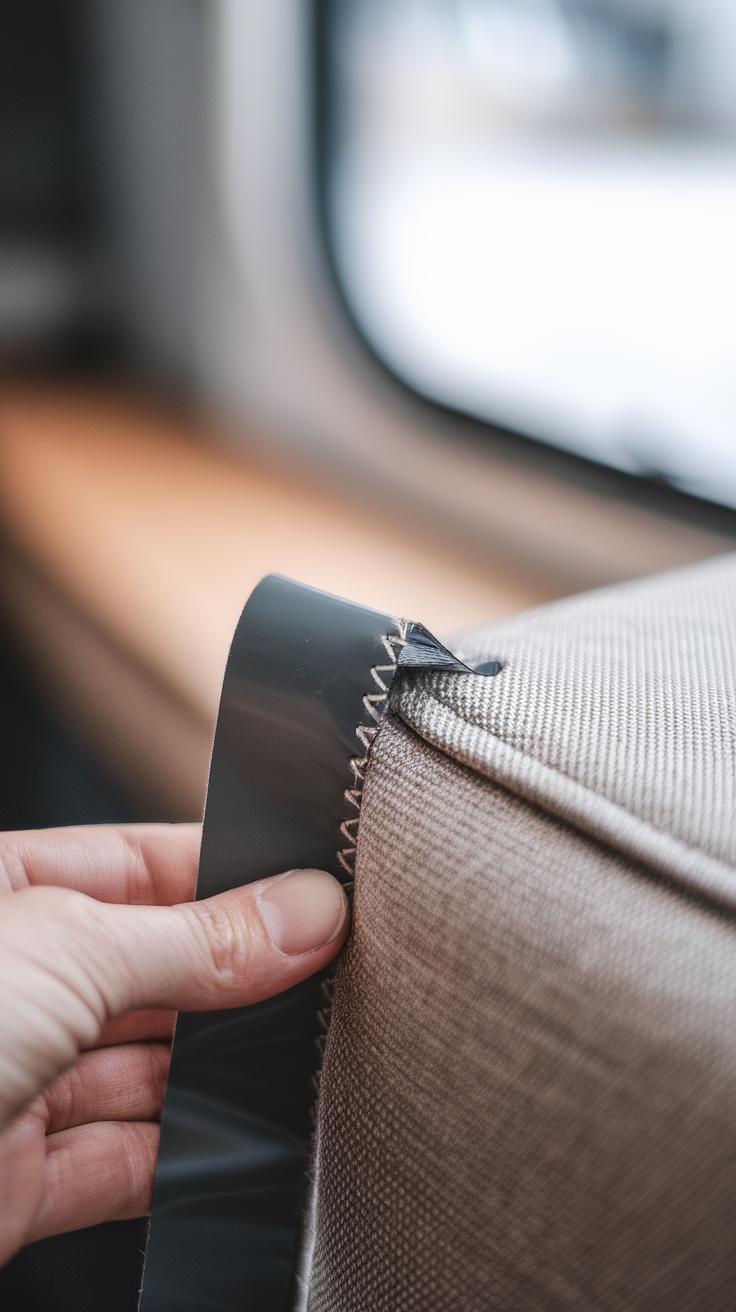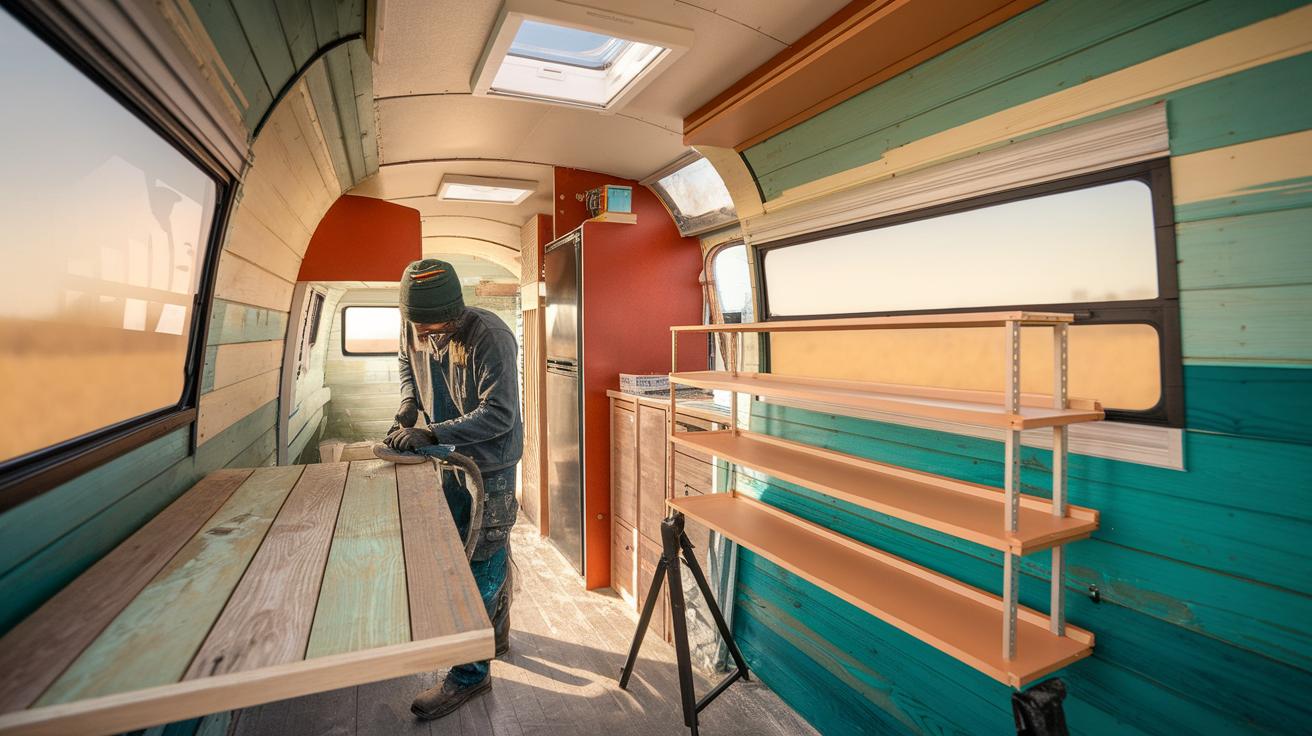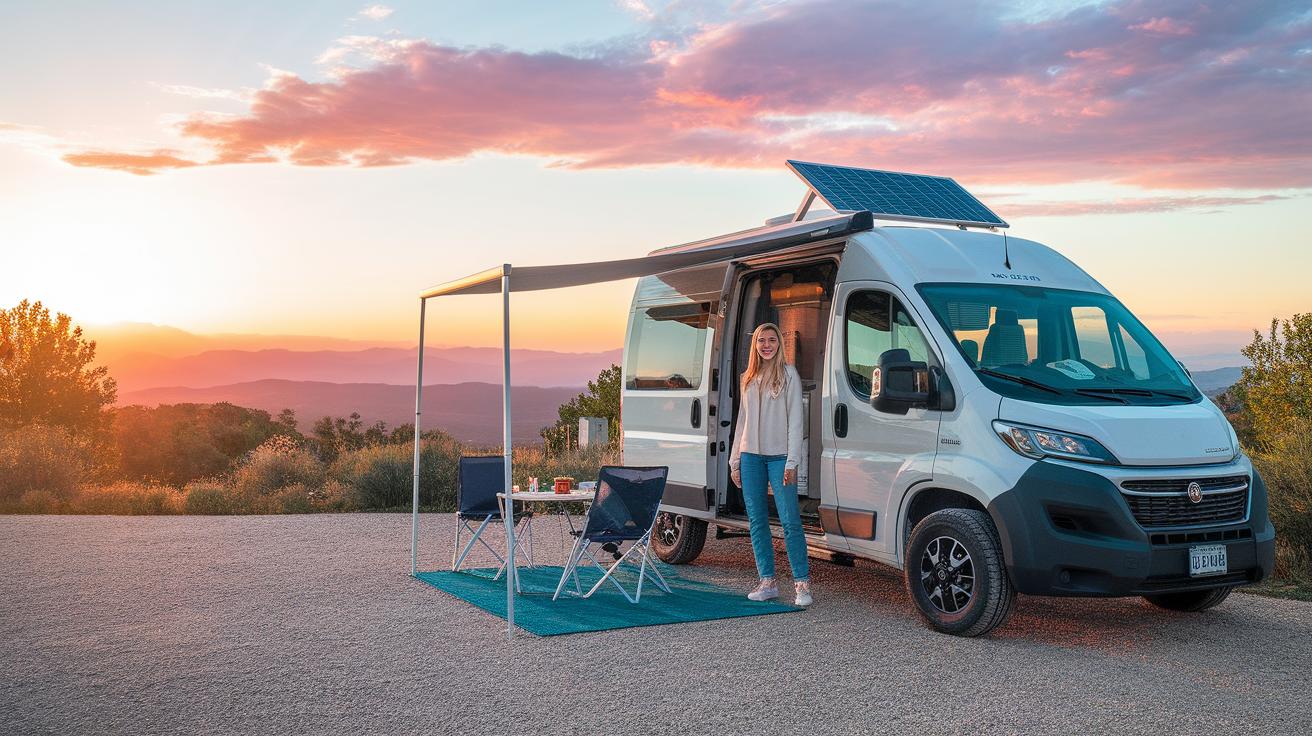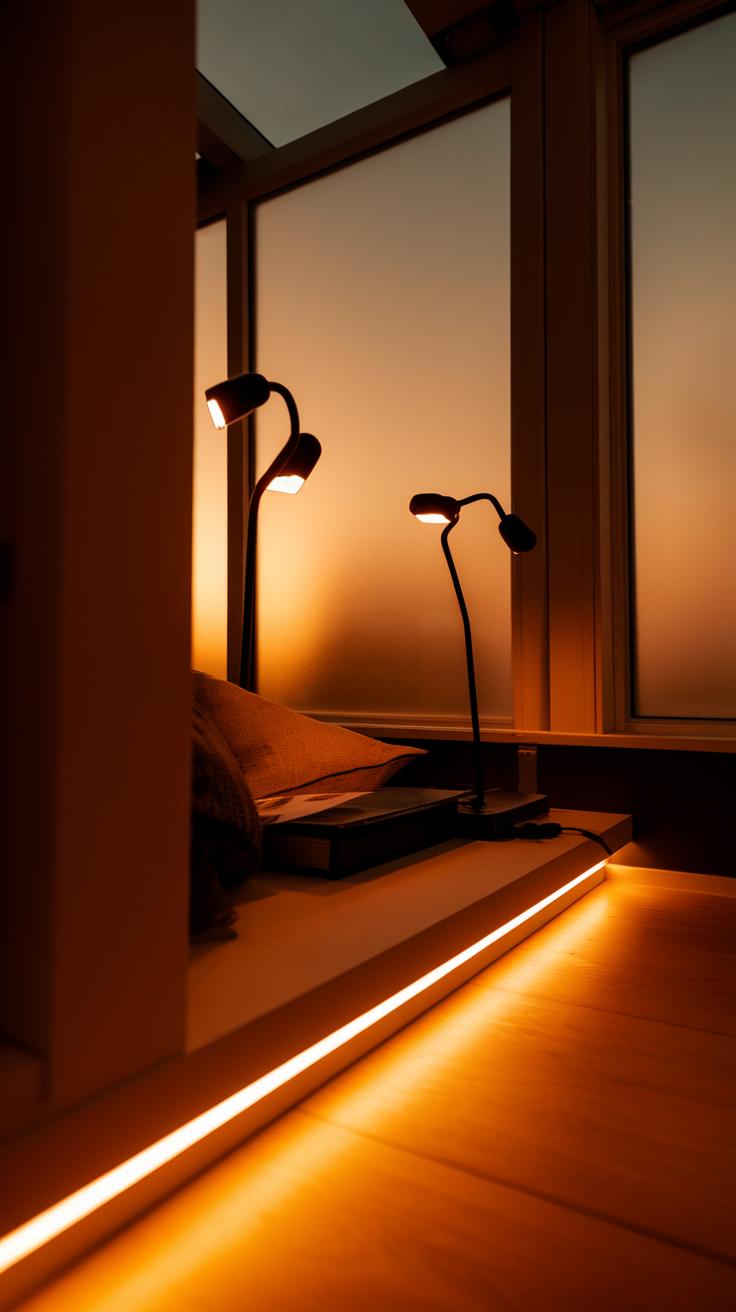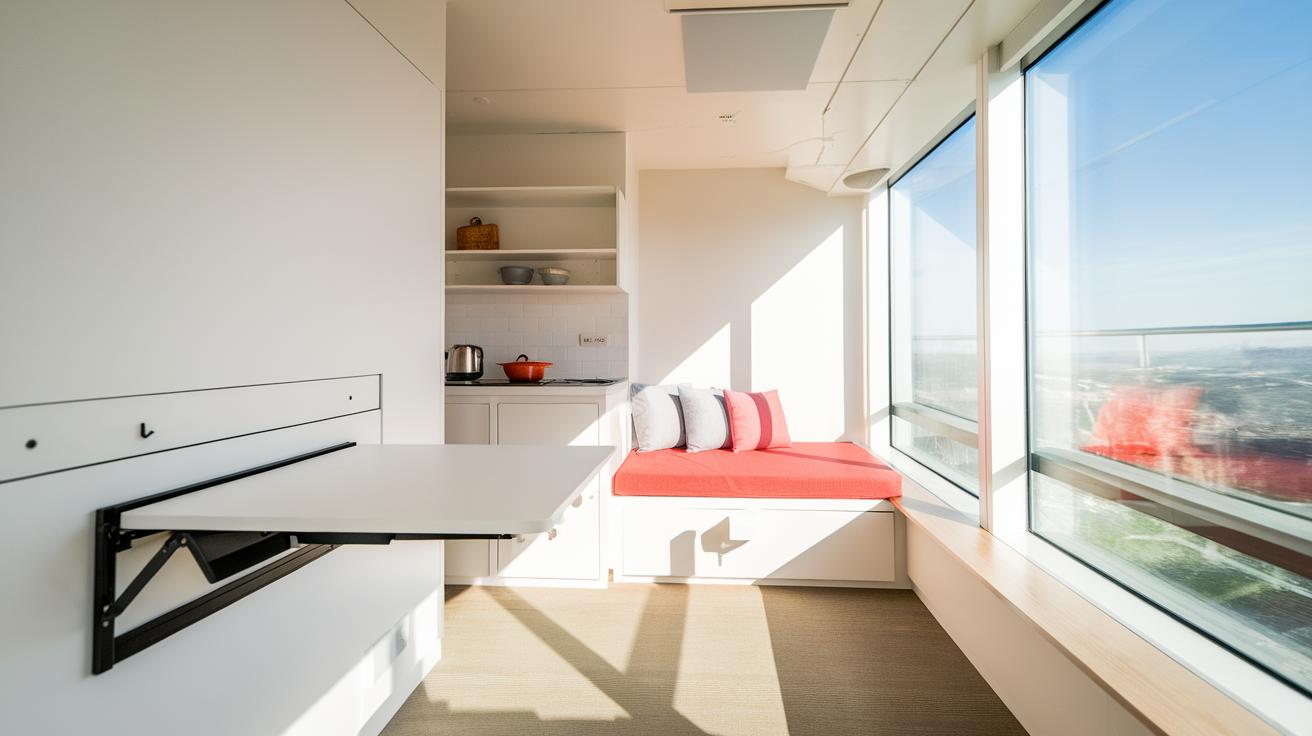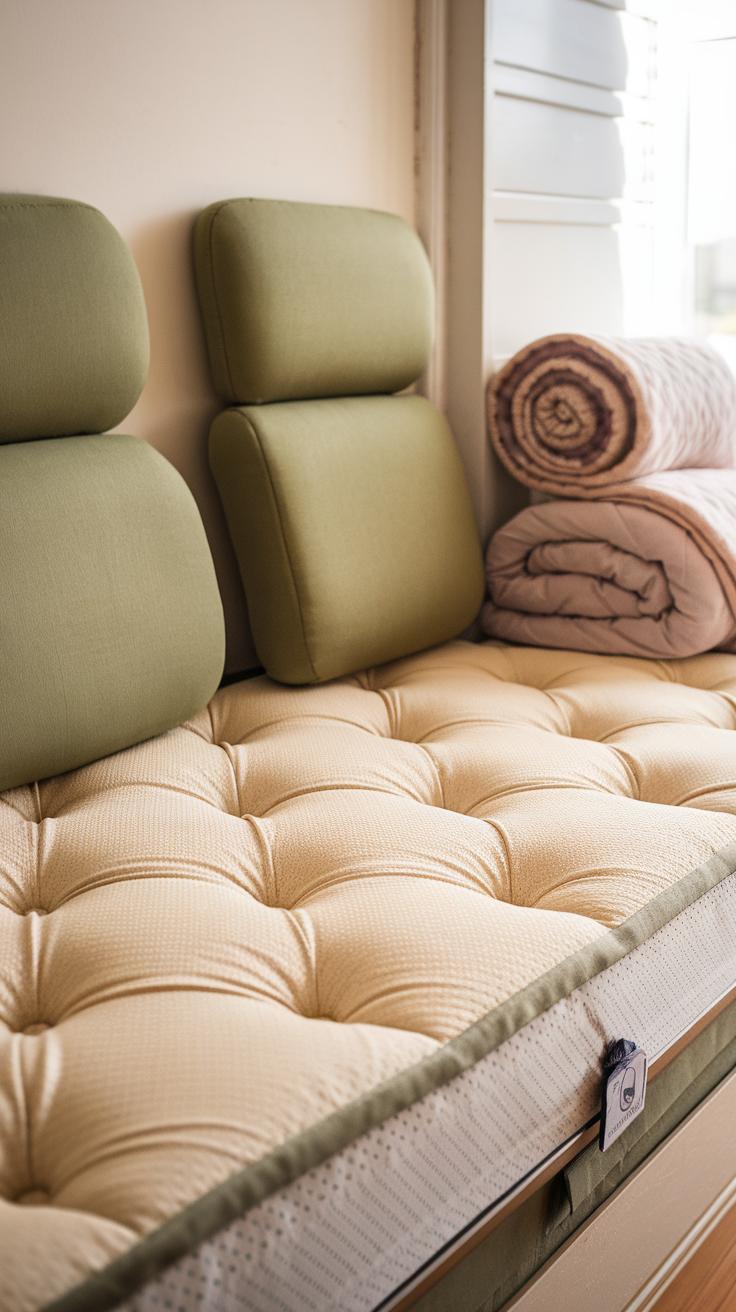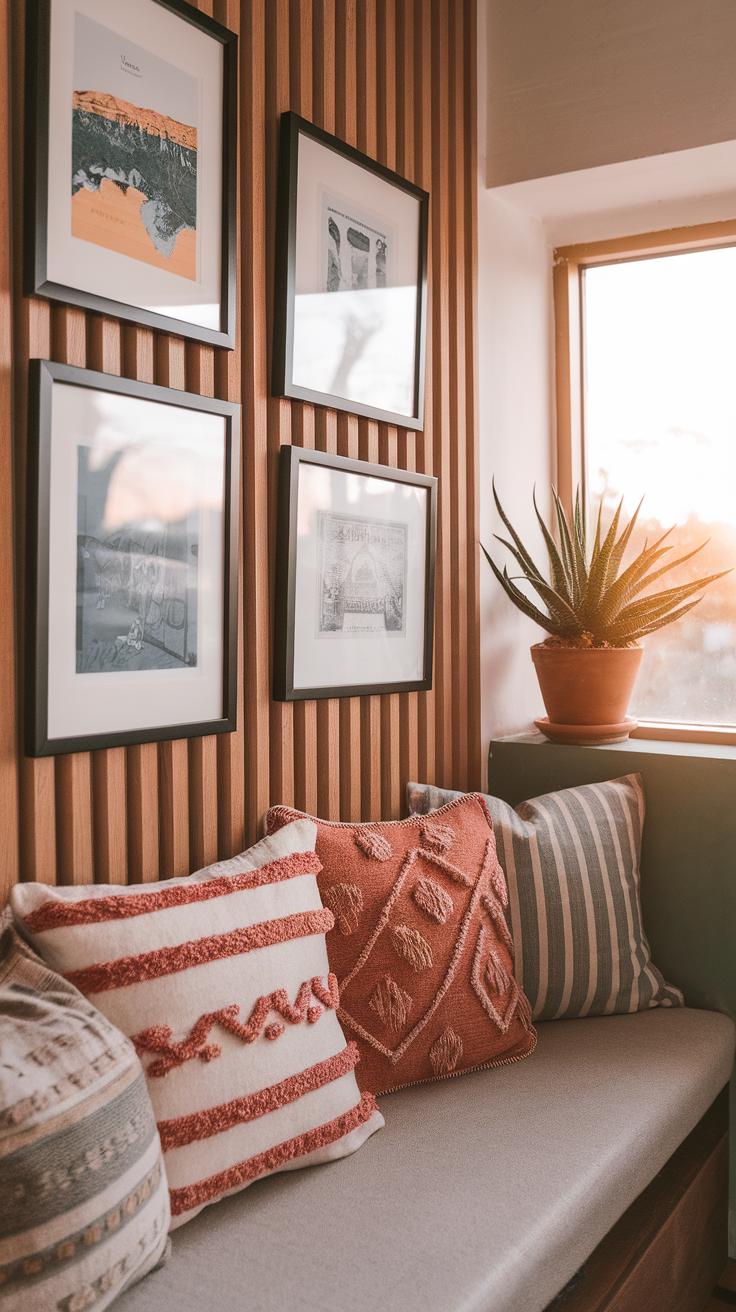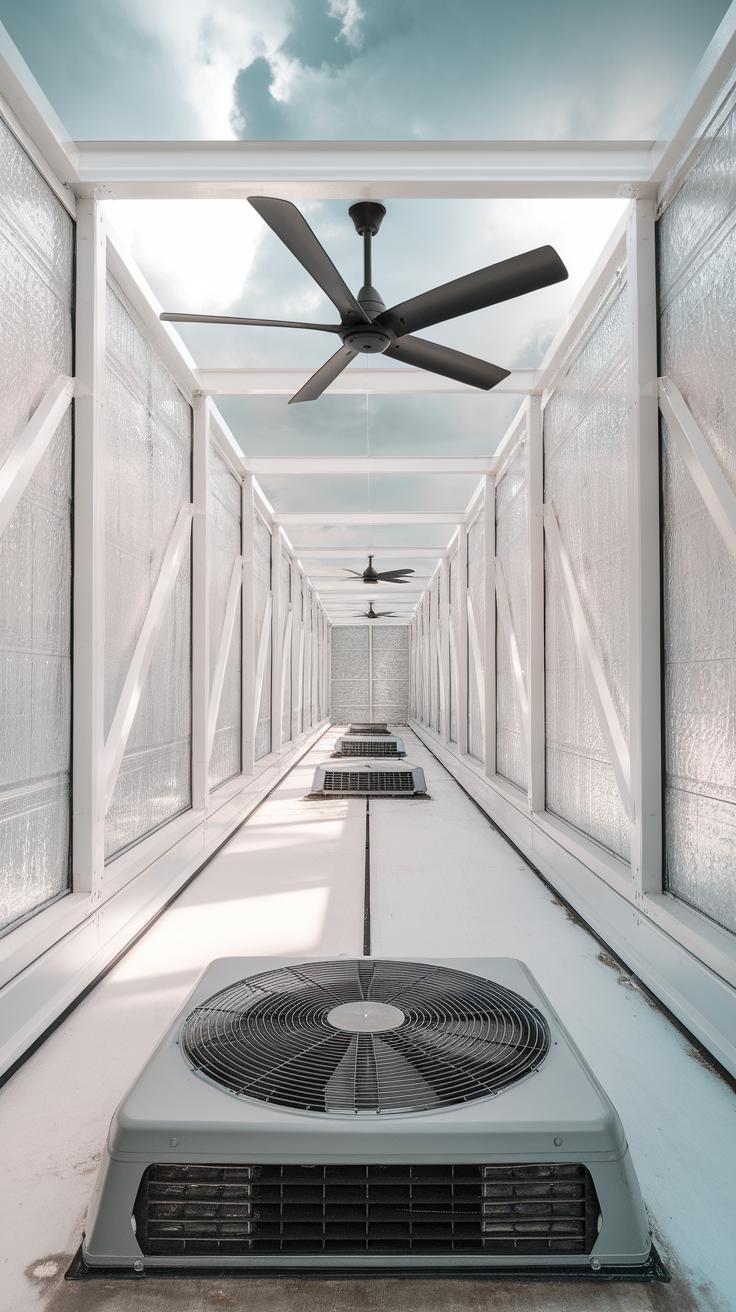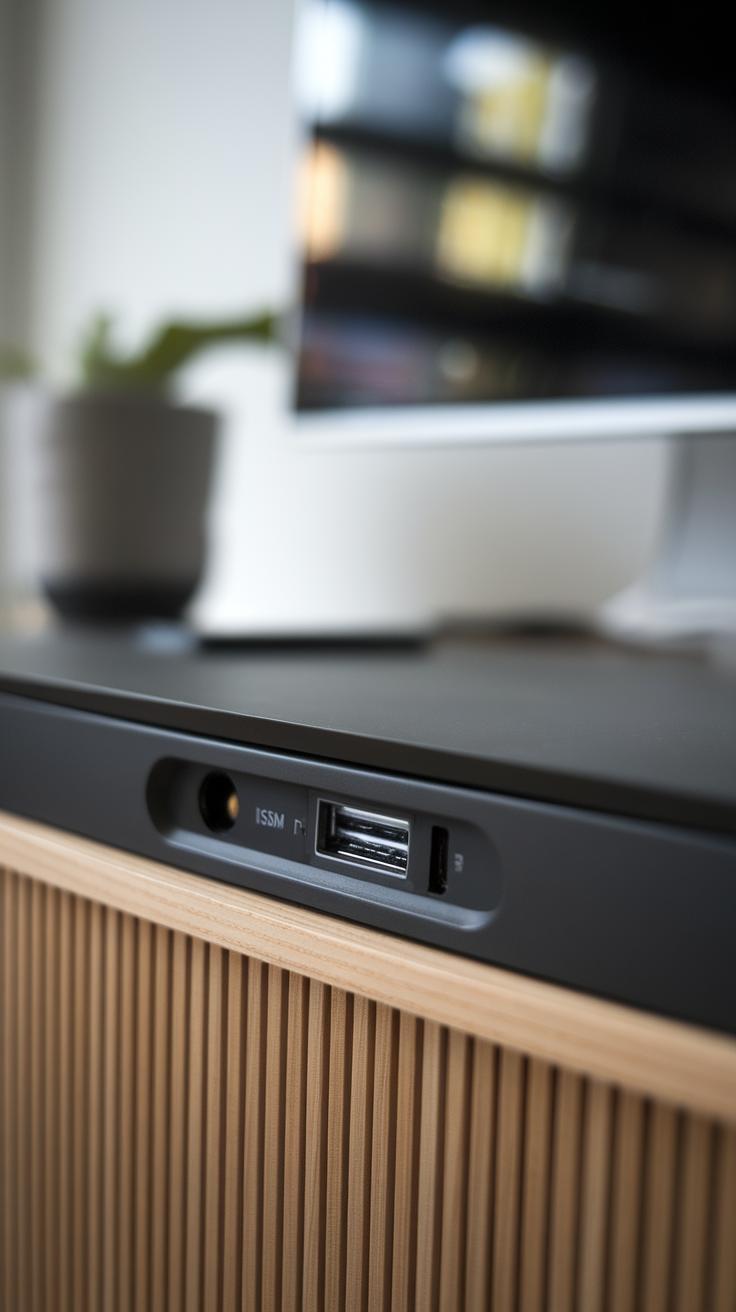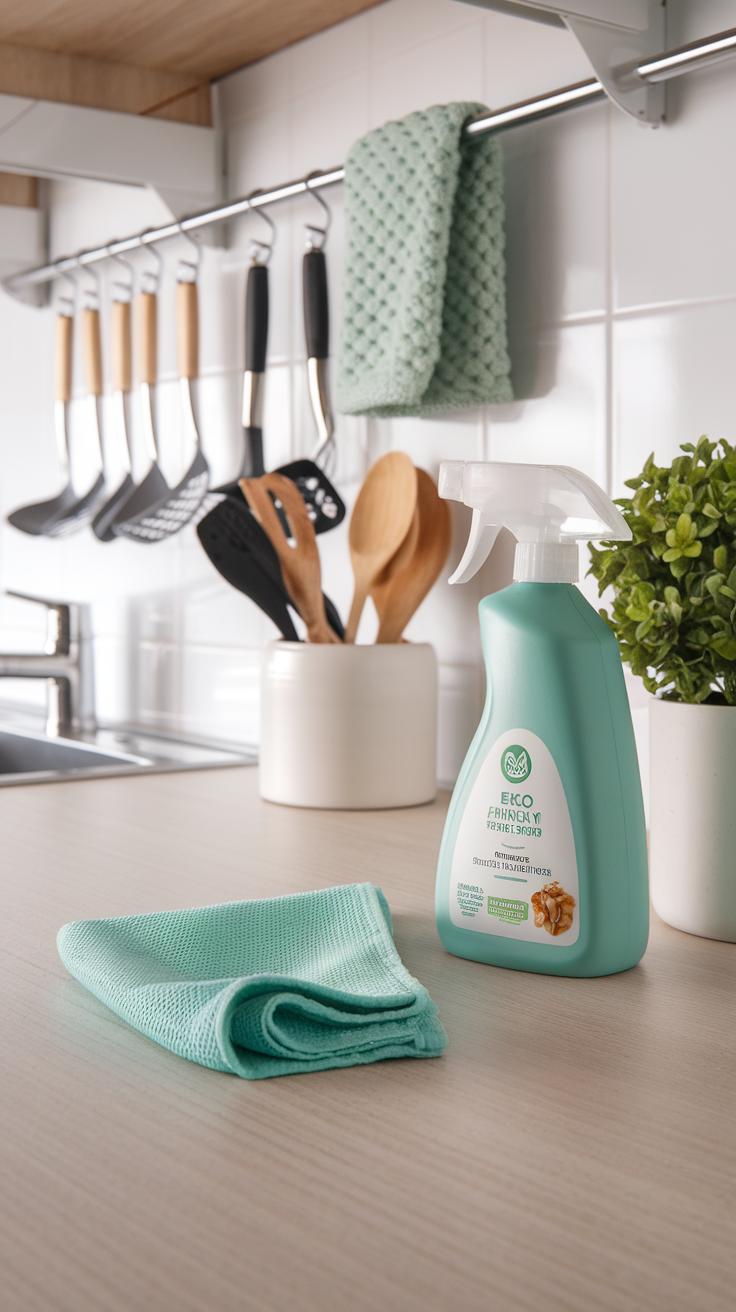Introduction
Your camper is more than a vehicle; it’s your home on wheels. A well-designed, upgraded interior can greatly improve your travel experience. Are you looking for ways to make your camper feel cozy yet stylish? Would you like to optimize your space for both comfort and functionality? This article will guide you through practical steps and smart ideas to transform your camper interior.
From choosing materials that stand up to travel wear to fitting smart storage solutions, you control how your camper looks and feels. Have you thought about how small changes can make a big impact on your comfort? This exploration covers everything from basic design principles to advanced upgrades. Your camper lifestyle deserves an interior that reflects your taste and meets your needs during every journey.
Understanding Your Camper Space
Start by measuring every inch of your camper’s interior. Knowing exact dimensions helps you understand what fits where. Use a tape measure to record the length, width, and height of walls, floors, and ceiling. Note any unusual shapes or slants that might affect space.
Identify which parts of your camper are fixed, such as built-in cabinets or plumbing fixtures. These define the boundaries where you cannot make big changes. Then look for flexible areas, like movable furniture or open floor space, that can be rearranged or upgraded.
Think about how you use the space now. Is the layout comfortable for living and sleeping? Do you have enough storage? Are there dead zones that you avoid or areas that feel cramped? The goal is to spot places where your camper doesn’t work well for your needs.
Maximizing space efficiency means turning every spot into something useful. How can you plan improvements that open up your camper? Sketch your ideas or use an app to visualize changes. This prepares you to upgrade wisely, balancing style and comfort.
Assessing Space Dimensions
Measure your camper’s interior carefully to avoid mistakes later. Start by measuring the floor from wall to wall in several places. Don’t assume the floor is perfectly rectangular—some campers have curves or cutouts.
Measure the height from floor to ceiling at multiple points. A low ceiling might limit tall furniture choices or storage options.
Use a tape measure for accuracy. Mark your measurements on paper or type them into a note app immediately. Double-check your numbers to catch errors before buying any materials or furniture.
Measure doors and windows, too. Their size and position affect light, ventilation, and how you move around inside. Collecting these numbers gives you a clear picture of what your camper’s interior truly looks like.
Evaluating Current Layout
Look closely at how your camper’s layout works for daily life. Identify all fixed installations like kitchen counters, bathroom fixtures, or built-in seating. These elements limit how you can rearrange the space.
Check movable furniture and see if it fits well or blocks passages. Does your table fold down easily? Can chairs be stored out of the way? Pay attention to areas that you don’t use much—maybe the corner under a window or space above cabinets.
Pinpoint these underused areas to unlock potential. Could adding shelves or multi-purpose furniture transform these spots? Ask yourself which parts cause frustration or waste space most.
Prioritize upgrades in areas that impact comfort and usability the most. Focus on sections where small changes could bring big improvements in how you live and move inside your camper.
Choosing Durable and Comfortable Materials
Your camper needs materials that handle wear but still feel good to use. Flooring, upholstery, and cabinetry should hold up to constant movement, changing weather, and daily spills without losing comfort.
Flooring materials must be strong yet light. Heavy floors make your camper harder to move or fuel less efficient. Upholstery fabrics should resist stains and allow airflow. Cabinet wood or composite materials should resist moisture and scratches, lasting years without warping.
Think about how much time you will spend inside and the activities you plan. Will you hike in muddy boots or cook often? Choose materials that make cleaning simple, such as vinyl or treated wood surfaces, to keep your space fresh. Balancing toughness and comfort helps your camper stay stylish and functional throughout your journeys.
Flooring Options for Longevity
Vinyl is popular for campers because it stands up well to water and dirt. You can clean it quickly, making it great for frequent travelers. It feels softer under your feet than laminate but might not look as natural.
Laminate floors mimic wood and add warmth to your space. They resist scratches better than some materials but don’t handle moisture as well, so place rugs near doors.
Rubber flooring offers extra cushioning and excellent grip, making it safe and easy to clean. The downside is it can feel cooler and less inviting without rugs.
Which flooring suits your travel style? Consider where you camp most and how often you want to clean. Durable flooring keeps your camper looking good while supporting your adventures.
Fabrics and Upholstery Choices
Upholstery fabrics must endure spills, sun exposure, and friction without fading or tearing. Look for materials like microfiber, Sunbrella, or treated canvas that reject stains and dry quickly.
Breathable fabrics prevent discomfort during warm weather, keeping seats cool and reducing odors. Always check if covers are washable to extend their life.
Matching style with practicality means picking colors and patterns that hide dirt but still complement your camper’s look. Neutral tones offer versatility, while brighter colors can modernize the space.
Ask yourself: Do you want easy care or bold style? Selecting the right fabrics helps your camper remain inviting and durable, letting you relax after a long day of travel.
Optimizing Storage Solutions
When space feels tight inside your camper, smart storage can change how you live and travel. Keeping your gear, supplies, and essentials organized makes moving around easier and your space more comfortable. Think about adding storage where you might not expect it, such as under seats or above your head. Built-in cabinets tailored to your camper’s shape grab every inch of space efficiently. Overhead compartments offer room without taking up floor area, so you stay clutter-free.
Using multi-use furniture helps you avoid crowding. Imagine a bench that holds your bedding or a fold-out table that disappears when not needed. Organized storage saves time and stress on the road. What tasks take up most of your space now? Can you replace bulky boxes with clever storage spots that fit your daily needs? Small changes in storage design make your camper feel larger and your trips more relaxed.
Built-in Storage Ideas
Built-in cabinets and shelves offer practical storage without crowding the camper. Install cabinets that reach from floor to ceiling to use vertical space. Narrow shelves make good spots for books, spices, or small tools. Cabinets with sliding doors save room where space to open doors is limited. Hidden compartments beneath benches or behind panels help keep gear out of sight but close at hand.
Custom-fit units match your camper’s curves and measurements. This means no wasted space or awkward gaps. Have you checked every corner for spots to add shelves or cabinets? Using lightweight plywood or thin metal can keep your camper from getting heavy. Think of building in storage as a way to keep your camper neat and happy on every trip.
Multi-functional Furniture
Furniture that does double duty fits well in small campers. Storage benches combine seating with space for blankets, cookware, or shoes inside. Fold-out tables or desks save space when you don’t use them. Some beds lift up to reveal large storage areas underneath. Think about chairs that fold flat or stack easily if you don’t need many seats all the time.
Using multi-functional furniture keeps your camper open and free of clutter. How much space could you save by replacing a chair with a storage bench? A small fold-up desk can serve for meals or work without crowding your living area. Furniture that transforms adds comfort and style without making your camper feel tight or chaotic.
Enhancing Lighting for Ambiance and Function
Lighting plays a big role in how your camper feels and works. Good lighting helps you relax after a day on the road and makes daily tasks easier. You want a mix of natural light, LED lights, and task lighting to cover all needs.
Natural light creates a bright and airy space. It improves your mood and makes the camper feel larger. LED lights save power and offer options to change brightness and color. Task lighting focuses on areas like cooking or reading, making those activities safer and more comfortable.
Think about where you place your lights. Overhead lights give general brightness, while small spotlights highlight areas you use most. Using dimmers can help adjust lighting to match your mood and time of day. Choosing energy-efficient options extends battery life when you’re off-grid.
Using Natural Light
Windows and skylights offer the best natural light in your camper. Position windows across from each other to allow fresh air and light to flow through. Adding sheer curtains or light-colored blinds softens sunlight without blocking it.
Clear window areas and avoid bulky coverings that limit daylight. Consider reflective surfaces like light wood or white walls to bounce light inside. You might want to install window treatments that easily open or close to control glare as the sun changes position.
Ask yourself how you want to use daylight: do you want strong light for cooking or soft light for relaxing? Adjust window placement and treatments to match your daily routine and camping spots.
Installing Efficient LED Lighting
LED lights use less electricity and last longer than other bulbs, which is important for camper trips. Choose LEDs with adjustable brightness and different color temperatures to fit different times of day or moods. Cooler light helps with focus while warmer tones feel cozy.
Install strip lights under cabinets or along shelves for subtle, indirect lighting. Place bright LED spots above work areas like the kitchen counter or desk for better visibility. Battery or solar-powered LED options give you more independence from shore power.
Think about easy access to switches and the direction of the light. Controlling intensity with dimmers or remote controls adds comfort. Matching your LED setup with your camper’s layout improves both how it looks and how you use the space.
Improving Seating and Sleeping Comfort
Your camper’s seats and beds play a huge role in how restful your travels will be. Choosing the right mattress and cushions can transform your space from just functional to truly comfortable. Different mattresses work better for different campers. Foam mattresses are lightweight and easy to store, while memory foam molds to your body for better support. If space is tight, consider folding or inflatable mattresses that pack away easily. Firmness matters too; a mattress that’s too soft might cause back pain after a long trip.
Cushions on seats should balance comfort and durability. Look for cushions with high-density foam and fabrics that resist stains and dry quickly. Think about how long you’ll sit each day—softer materials might feel cozy at first but lose support fast during long drives or meals.
Comfort in your camper doesn’t just improve sleep—it affects your mood and energy. When your body rests well, you feel ready to enjoy each new destination. What small upgrade could make your camper feel like a true retreat?
Selecting Mattresses and Cushions
Picking a mattress starts with size. Measure your sleeping area carefully to avoid bulkier options that crowd your space. Thin mattresses suit pop-up campers, while thicker foam options work in larger vans. Portability also matters. A foldable or roll-up mattress lets you reclaim seating during the day without hassle.
Seat cushions come in many styles. Memory foam offers pressure relief but might trap heat. High-density foam provides firmer support and lasts longer. Cover fabrics contribute to comfort—microsuede and canvas resist stains and feel soft against skin, while mesh allows airflow, keeping cushions cooler in warm weather.
Always consider how cushions hold up under repeated use. You can swap covers easily to refresh the look or clean spills. Does your camper’s seating invite you to linger, or do you find yourself standing too soon?
Ergonomics for Small Spaces
Ergonomic design becomes crucial in tight camper interiors. Seating should support your lower back and encourage good posture during meals or work. Adding lumbar cushions or adjustable backrests can help prevent aches. Position seating to face windows when possible; natural views reduce strain and increase relaxation.
For beds, support zones that align with your body’s curves improve rest. A mattress topper adding contouring support makes a big difference. Adjusting bed height can ease getting in and out, especially if you suffer from joint pain.
Think about how you sit and sleep daily. Are your hips, shoulders, and spine properly aligned? Small shifts in design can improve comfort dramatically. Which part of your camper do you use most? That’s where ergonomics will make your biggest impact.
Incorporating Functional Kitchen Features
Your camper kitchen must work efficiently within limited space. Choosing the right upgrades can improve usability and keep your travels comfortable. Focus on items that save space and serve multiple purposes.
Compact appliances designed for campers often use less power and fit snugly into small kitchens. Look for portable stoves that run on propane or electricity and mini-fridges sized to your needs. Smaller appliance sizes allow you to keep essential gear without cluttering your space.
How often do you cook while on the road? Investing in space-saving gadgets can make meal prep faster and easier. Consider adding folding counters or retractable surfaces to expand your workspace only when you need it. Cabinets with organized compartments help keep cookware neat and easily accessible.
Proper kitchen design supports comfort during travel. When your space feels functional rather than cramped, you enjoy cooking and cleaning more. These upgrades blend well with seating and sleeping improvements for a well-rounded camper interior.
Selecting Compact Appliances
Choosing the right compact appliances matters for power use and space. Portable stoves come in single or double burners and work on propane or electric power. Single burners fit tight spots, while doubles let you cook multiple dishes.
Mini-fridges vary in size and power draw. A 3 to 4 cubic feet model usually fits camper counters and keeps food fresh without draining your battery. Some fridges offer freezer compartments for extra flexibility.
Other helpful compact appliances include electric kettles, toaster ovens, and small coffee makers designed for limited circuits. Always measure your available space before buying to ensure a good fit.
Ask yourself what meals you often prepare during trips. This helps you choose appliances that align with your cooking habits and energy resources.
Counter and Storage Solutions
Maximize your camper kitchen by adding extra counter space through foldable or retractable surfaces. Installing a fold-out tabletop near your sink or stove can provide a sturdy prep area that tucks away when not in use.
Vertical storage walls with hooks and magnetic strips keep utensils and pots within reach without eating counter space. Use stackable containers and pull-out drawers inside cabinets to organize cookware efficiently.
Consider cabinet inserts that separate plates, pans, and spices. Clear bins make it easier to spot what you need quickly. Remember, an uncluttered kitchen reduces stress and speeds up meal prep.
Do your current kitchen storage options help you find items fast? Small changes in counters and cabinets make a big difference in making your camper feel like home.
Adding Personal Style and Decoration
Your camper’s interior should feel like your own space without feeling cramped. Think about choosing colors and decorations that brighten the area and stay simple. Using light colors can make your camper seem larger and less crowded. You want to add elements that bring warmth but don’t take up extra space or add clutter. Consider textiles that are soft yet durable, like cotton or linen blends, which are easy to clean and fit well in a camper setting.
Accessories like small cushions or wall hangings can show off your personality but choose pieces that serve a dual purpose or are easy to store. Ask yourself what you need daily and what just adds extra weight or mess. Keeping things practical helps your camper remain comfortable throughout your travels without feeling overdone.
Choosing Color Schemes
Picking colors in a small camper matters a lot. Lighter shades such as whites, creams, and pale blues often make the space feel airier and bigger. These colors reflect light and brighten your interior naturally. You may want to add subtle pops of color with accents but keep the main palette neutral enough in case you decide to sell your camper later. A neutral base allows you to switch out accessories easily without changing the whole look.
Think about how each color affects your mood and energy while on the road. Would you prefer calming tones to unwind or more lively shades to stay alert? You can mix warm and cool neutrals for balance and comfort. What colors do you find most welcoming after a long day traveling?
Selecting Practical Decorations
When adding rugs, curtains, or artwork, think about how easy they are to clean and store. Choose smaller rugs with non-slip backings that protect your floors and add softness underfoot. Curtains should be light in weight, easy to remove, and block sunlight without making the space feel closed in. Art can bring personality but opt for lightweight pieces or removable decals that won’t damage walls.
Consider how each decorative item impacts storage. Can you fold a rug and tuck it away? Will your curtains dry quickly if they get wet? Keeping decorations simple and functional lets you enjoy a stylish interior while avoiding clutter. What small decorative touches would make your camper feel most like home?
Installing Climate Control Solutions
Comfort inside your camper depends on managing heat, cold, and airflow efficiently. Different climates require different solutions, so your setup should adapt to where you travel.
Portable units give flexibility. You can move them where needed or pack them away in warm weather. Installed options create lasting comfort but need thoughtful planning. Both approaches help you stay cozy or cool during trips.
Heating might include electric heaters, propane stoves, or diesel-fueled systems. Cooling can be handled by fans or air conditioners. Ventilation is often overlooked but plays a key role in preventing stale air and moisture buildup.
How much power is available? This question guides your choice between portable and built-in devices. Small solar setups might support low-energy fans, while bigger battery banks handle air conditioners.
Combining heating, cooling, and ventilation ensures you maintain air quality and temperature year-round. Which option fits your camper’s size, power capacity, and usual destinations best?
Portable Climate Control
Portable climate devices make heating and cooling easy without altering your camper. Popular portable heaters include ceramic and propane models. Ceramic heaters run on electricity and heat up quickly. Propane heaters offer warmth without drawing battery power.
For cooling, small fans improve airflow, and portable air conditioners bring real relief in hot weather. Window-mounted or freestanding AC units require a power source and proper venting.
Check power consumption before buying. Electric heaters might draw 750-1500 watts, so ensure your camper’s system supports it. Fans consume far less, often under 50 watts. Portable AC units vary widely but usually need 800-1500 watts.
Portability means you can place these devices where they work best and store them away when not needed. Consider how much space a unit takes and if it adds noise or uses fuel.
Built-in Ventilation and Insulation
Fixed ventilation like roof vents and vent fans improve airflow without extra power. Fans that pull stale air out keep air fresh and reduce humidity. Combining intake vents helps maintain balanced circulation.
Upgrading insulation makes a big difference. Adding foam boards or reflective barriers in walls and ceilings reduces heat loss in winter and heat gain in summer. Insulation lowers the load on heaters and coolers.
Window treatments like thermal curtains or reflective shades prevent heat transfer. They block sun in summer and keep cold out during winter nights.
These built-in solutions help balance temperature and air quality day and night. They work quietly in the background to keep your camper comfortable without needing constant attention.
Have you tested your camper’s airflow and insulation? What small fixed improvements could reduce your reliance on portable devices during extreme weather?
Upgrading Electrical and Tech Features
Your camper’s electrical system is key to staying comfortable and connected on the road. Upgrading this system can improve reliability and let you add modern technology without worry. Think about installing solar panels to generate clean energy by harnessing sunlight. Pairing solar panels with rechargeable batteries lets your camper store power for night use or cloudy days. This setup reduces your dependence on campground hookups or noisy generators.
Managing energy efficiently is just as important as producing it. A good battery management system keeps your batteries healthy and prevents unexpected power loss. You can monitor energy use and charge levels through simple displays or apps. How would more dependable power change your travel plans?
Along with power upgrades, smart technology improves your living space. Installing smart LED lighting lets you control brightness and color from your phone. Adding Wi-Fi boosters helps keep you online in weak signal areas. Plan charging stations strategically to power multiple devices safely. When upgrading, choose components that support future tech changes. This approach keeps your camper ready for new gadgets and comfort features as they emerge.
Solar and Battery Systems
Installing solar panels starts with assessing your energy needs. Panels convert sunlight into electricity that charges your batteries. Select panels based on size, efficiency, and your camper’s roof space. You’ll need rechargeable batteries, typically lithium or AGM types, to store this energy. Lithium batteries cost more upfront but last longer and weigh less than AGM options.
Installation involves mounting panels securely and wiring them to a charge controller, which prevents overcharging. Connect the controller to your battery bank to store power. Costs vary depending on panel wattage and battery capacity but upgrading can pay off by reducing campground fees and generator use.
Energy management means balancing what you produce with what you consume. Use monitors to track battery health and solar output. This keeps your system running smoothly and avoids draining batteries too low. Have you thought about how much energy your daily camper routine requires?
Modern Tech Additions
Smart lighting makes your camper feel modern and easy to use. You can program lights to turn on or off automatically or set moods with color changes. LED strips are a popular upgrade that saves power and adds style. Wi-Fi boosters extend internet reach, which is valuable when camping off-grid or in rural areas. They improve signal strength to keep work and entertainment flowing smoothly.
Charging stations with USB and AC outlets help keep all your devices powered at once. Think about your electronics and plan enough ports in convenient places. To future-proof your upgrades, select components with firmware updates or modular designs. This way, you can swap parts or add new features without a full overhaul.
Are you ready to bring these tech comforts into your camper and enhance every trip?
Maintenance and Cleaning for Sustainable Comfort
Your camper’s upgrades will feel like new longer when you care for them regularly. Cleaning surfaces such as countertops, cabinets, and fixtures removes dirt and prevents buildup that can cause wear. Fabrics like seat cushions and curtains also need attention to avoid stains and odors. Appliances work better and last longer when you clean and maintain them according to the manufacturer’s instructions.
Would you like your camper to stay fresh and inviting on every trip? Setting up a simple care routine helps keep your space comfortable and stylish. You can protect your upgrades and avoid costly repairs by acting early when issues arise. Regular upkeep brings more joy to your travels.
Routine Cleaning Practices
Daily tasks include wiping down counters and tables to prevent grime. Sweep or vacuum floors to remove dirt and dust that wear out materials. Weekly chores should target deeper cleaning like washing windows, vacuuming upholstery, and scrubbing appliances.
Choose cleaners that are safe on common camper materials like laminate, vinyl, fabric, and metal. Mild dish soaps, vinegar solutions, or specialized camper sprays work well. Avoid harsh chemicals that can damage surfaces or release harmful fumes inside your small space. Do you have cleaning products that protect your camper while keeping air clean?
Sustainable Care Tips
Eco-friendly cleaning reduces your impact and protects your health. Use reusable cloths instead of paper towels to cut waste. Opt for biodegradable soaps and non-toxic products to keep indoor air quality high. Using water wisely while cleaning helps conserve resources on the road.
Consider making your own cleaning mixes with simple ingredients like baking soda and lemon juice. These fresh, natural choices can handle many tasks inside your camper. How can adopting greener habits improve your travel experience? Caring for your camper this way supports both comfort and the environment.
Conclusions
Your camper interior sets the tone for your adventure. Upgrading it allows you to enjoy both style and comfort on the road or at your campsite. Which improvements will enhance your trips the most? Consider what adds value and makes your space more livable. Applying organized storage, durable materials, and aesthetic touches brings your vision to life.
Choices you make in upgrading your camper will shape your travel ease and daily enjoyment inside it. Think about lighting, seating, sleeping, and utility features as interconnected elements. Investing time and effort in your interior design pays off in quality travel moments. How will you start improving your camper interior today?


